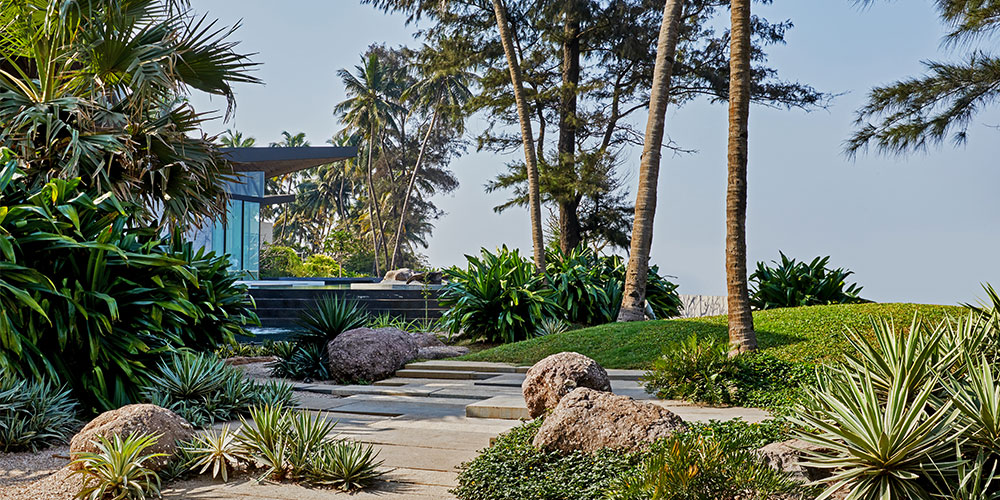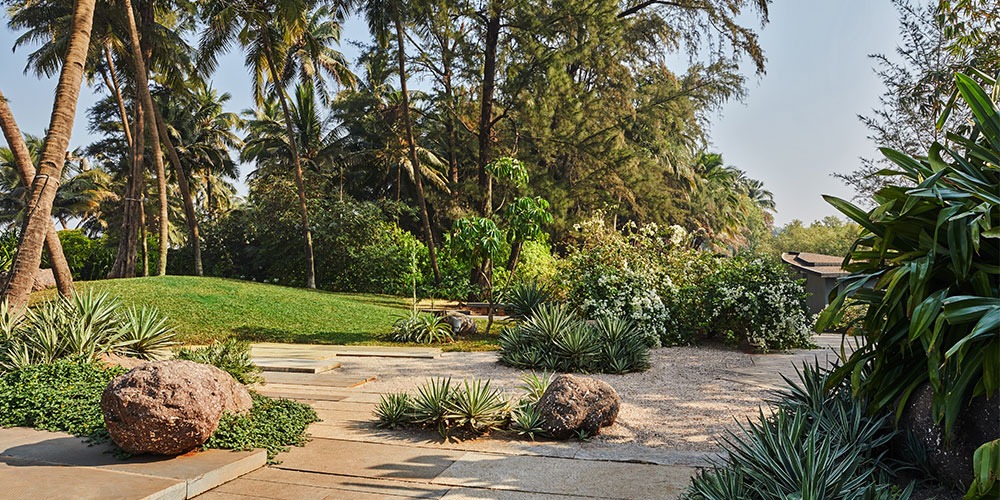Xeriscape is derived from the Greek word xeros meaning dry, so the term literally translates into dry landscape. Essentially, it uses the right kind of flora and is grown in a sustainable medium using prudent irrigation methods to create an aesthetic garden, which maintains ecological equilibrium. As illustrated by the accompanying images, I have given it my own interpretation. Plants that are low maintenance are perfect for xeriscaping. A large canopy reduces water lost from the soil via evaporation, while shrubbery with small or no leaves prevents the loss of water through transpiration. Soil that retains moisture but does not remain excessively wet, when mixed with the right amount of sand, rice husk, coconut peat or moss, is the ideal base for such plants to grow. Mulch in the top layer of soil, along with coarse white sand will help reflect heat and retain water for longer. Efficient methods of watering greens, such as drip irrigation and sprinklers would help maintain it better and conserve water. I think Xeriscape should not be limited to only cacti and succulent that create a dry zen-like approach, there are some tropical and subtropical species that need less water to thrive but form lush green spaces, replete with flowers and fruits.
Here are a few options that help built a vibrant xeriscape module…
Flowering trees: Bottle brush, gulmohar and saraca indica
Fruiting trees: Tamarind, Indian jujube or plum, black jamun, gooseberry and drumstick (these fruit bearing trees are native to India and have a large to medium canopy with small leaves)
Leafless trees: Casuarina, with its needle like foliage, requires comparatively less water because the thin leaves arrest transpiration
Palms: Tadgola or ice apple
Shrubs: Bougainvillea and spider lilies (flowering) sansevierias, pineapple (fruiting)
Creepers: Madhu malti (gives off a lovely fragrance)
Ground covers: Aptenia and lantana (flowering), peperomia
Lawns: In my experience, any kind of lawn would consume large amounts of water. Therefore, curtailing its size or punctuating it with trees would lessen the loss of water through evaporation would be a wise option.
Cacti and succulents: Possibly all cacti varieties
Other than sensibly selecting your plants, minimising hardscape areas in a garden, creating gravel pathways and avoiding cement and mortar would allow water to percolate into the ground itself, thereby aiding in its conservation. If you must have a stone path, ensure it is 40mm thick and placed straight on rammed earth without cement mortar.
Did you know? Frangipani also known as plumeria is a favourite of most plant lovers as well as architects, not only for its beautiful flowers but also the fact that it’s a xerophytic plant that could go on for days without water!

















